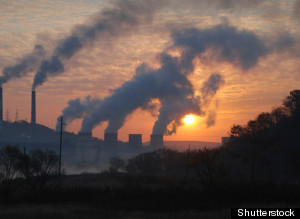Friday afternoon, the National Climate Assessment Advisory Committee – a consortium of 13 federal agencies — released its 3rd draft report on the impact of climate change on the U.S. As seems to be the rule with federal documents, it’s monstrously long, but fairly readable and the online table of contents is easy to navigate.
I went directly to the section on the Southwest to see what’s in store for the desert. It’s unsettling reading.
– Snowpack and streamflow amounts are projected to decline, decreasing water supply for cities, agriculture and ecosystems.

– The Southwest produces more than half the nation’s high-value specialty crops, which are irrigation-dependent and particularly vulnerable to extremes of moisture, cold and heat. Reduced yields from increased temperatures and increasing competition for scarce water supplies will displace jobs in some rural communities.
– Increased warming, due to climate change, and drought have increased wildfires and impacts to people and ecosystems in the Southwest. Fire models project more wildfire and increased risks to communities across extensive areas.
– Projected regional temperature increases, combined with the way cities amplify heat will pose increased threats and costs ot public health in Southwestern cities which are home to more than 90 percent of the region’s population. Disruptions to urban electricity and water supplies will exacerbate these health problems.
The not-so-subtle subtext here are the integral and finely balanced connections between food, water and energy — and the potentially dangerous disruptions that could occur as climate change drives more erratic and warmer weather.
Those connections are made more explicit in the report’s section on Water, Energy and Land Use:
“Energy, water and land systems interact in many ways. Energy projects – coal-fired power, biofuel, solar farms – require varying amounts of water and land; water projects – water supply, irrigation – require energy and land; and land activities – agriculture, forestry – depend upon energy and water. Increasing population and a growing economy intensify these interactions. Climate change impacts each of these sectors directly, and because of the many connections between them, sectoral responses are often intensified or offset.”
Backing all this up is another report released Monday, Food, Water, Energy: Know the Nexus, from the Grace Communications Foundation, a New York group that works on a range of sustainablity issues.
The report’s introduction lays out the issues by looking at the water, food and energy that goes into a pizza. Taking into account the water required to grow the wheat, mill the flour and produce the mozzarella, your basic cheese pizza soaks up 333 gallons of water, or enough to fill 10 bathtubs.
“Producing one calorie of food requires about one liter of water,” the report continues. “That means you ‘eat’ more water than you drink.”
The amount of energy used to make pizza is mind-boggling to conceptualize, let alone put a number on — think about how much electricity might be needed to pump water to grow the wheat, produce fertilizers and even the electricity required to manufacture the pizza oven.
The report contains many eye-opening figures, such as the amount of water used each day to cool power plants in the U.S. – 58 billion gallons from the ocean and 143 billion gallons of fresh water — more than used for agriculture or public drinking water.

Climate change could mean first less water to cool plants and second, warmer water, which may not even be able to be used at all.
The National Climate Assessment notes:
“The projected warming of water in rivers and lakes will reduce the capacity of thermal power plants, especially during summer when electricity demand skyrockets.”
The Grace Communications report ends not with recommendations, but with a list of the things we don’t know – where, when, and how much water we use; the quantity and quality of our groundwater; the true economic costs of environmental degradation — and the problems that arise from looking at food, water and energy issues in isolation.
The nexus approach the report promotes also fits well with the kind of collaborative, and adaptive decision making process the National Climate Assessment says will also be key to finding effective responses to climate change. Policy going forward must be science-based and flexible, acknowledging the uncertainties involved and the need for ongoing evaluation and adjustment, the report says.
In other words, when it comes to climate change, we will never know everything and even if we did, it would change almost immediately.
But what is abundantly clear from both reports is that action is essential now.

















